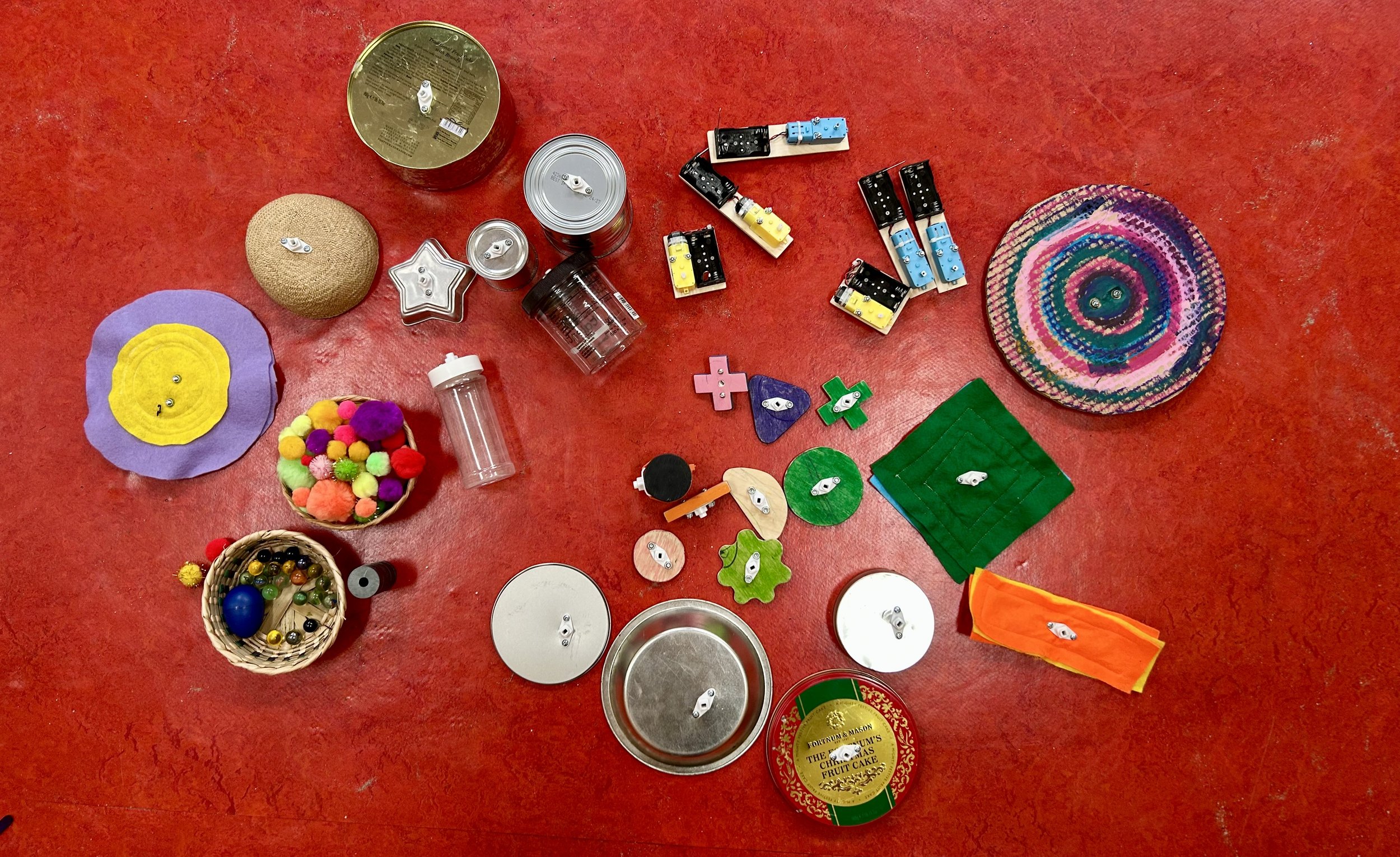For my first tinkering project at Dandelion, I decided to dust off an idea that Ryan Jenkins and I worked on back in the early days of the Wonderful Idea Co.. Ryan called them scrappy motion boards, and they were distant cousins of scribbling machines, but with a motor, battery and switch all attached to one board instead of being taped onto a recycled base. The motion boards used slow-moving motors, and had interchangeable laser-cut “wheels” of all shapes and sizes that could be pressed onto the motor shaft. This made them move in really interesting ways, depending on which “wheels” you chose.
For the Dandelion preschool tinkering project, I wanted to make something inspired by the scrappy motion boards, that was accessible for really young kids but still open-ended and playful. I started by simplifying the boards, making them as small as possible, with just enough room to mount the motor and battery pack. I also used a battery pack with a big built-in knife switch that would be easy for small hands to manipulate.
new and improved boards
The next challenge was finding a way to attach things to the motor hubs. The scrappy motion boards used laser-cut attachments that were pressed onto the shaft, but I didn’t have access to a laser cutter. Luckily, I found these excellent hubs, and I discovered I could attach them to just about anything. So I did! I gathered an odd assortment of things to try as attachments, including tin cans, baskets, cookie tins, plastic jars, a pie pan, and lids of all sorts. I also made a few custom wooden shapes to try, and at the brilliant (and silly) suggestion of a friend, I made some floppy fabric attachments as well. The next step was trying them out with the kids at Dandelion, and this is the set of materials I brought to try.
this was the set of materials we tried; motor boards, a wide variety of attachments, magnets for weights, and pom-poms and marbles for the rolly-polly robots to play with
And here are just a few of the roly-polies that the preschoolers at Dandelion created, including a face that changes from happy to sad as it spins, a floppy robot, a musical machine that spins a shaky egg, and the last one is a collaborative game, where each kid tries to toss a pom-pom into the spinning star as it moves around the floor. There were many, many more experiments, and I was amazed how diverse all of their ideas were. This set-up really seemed to encourage open-ended exploration, making space for the kids to engage in different types of play while working with a shared set of materials.






